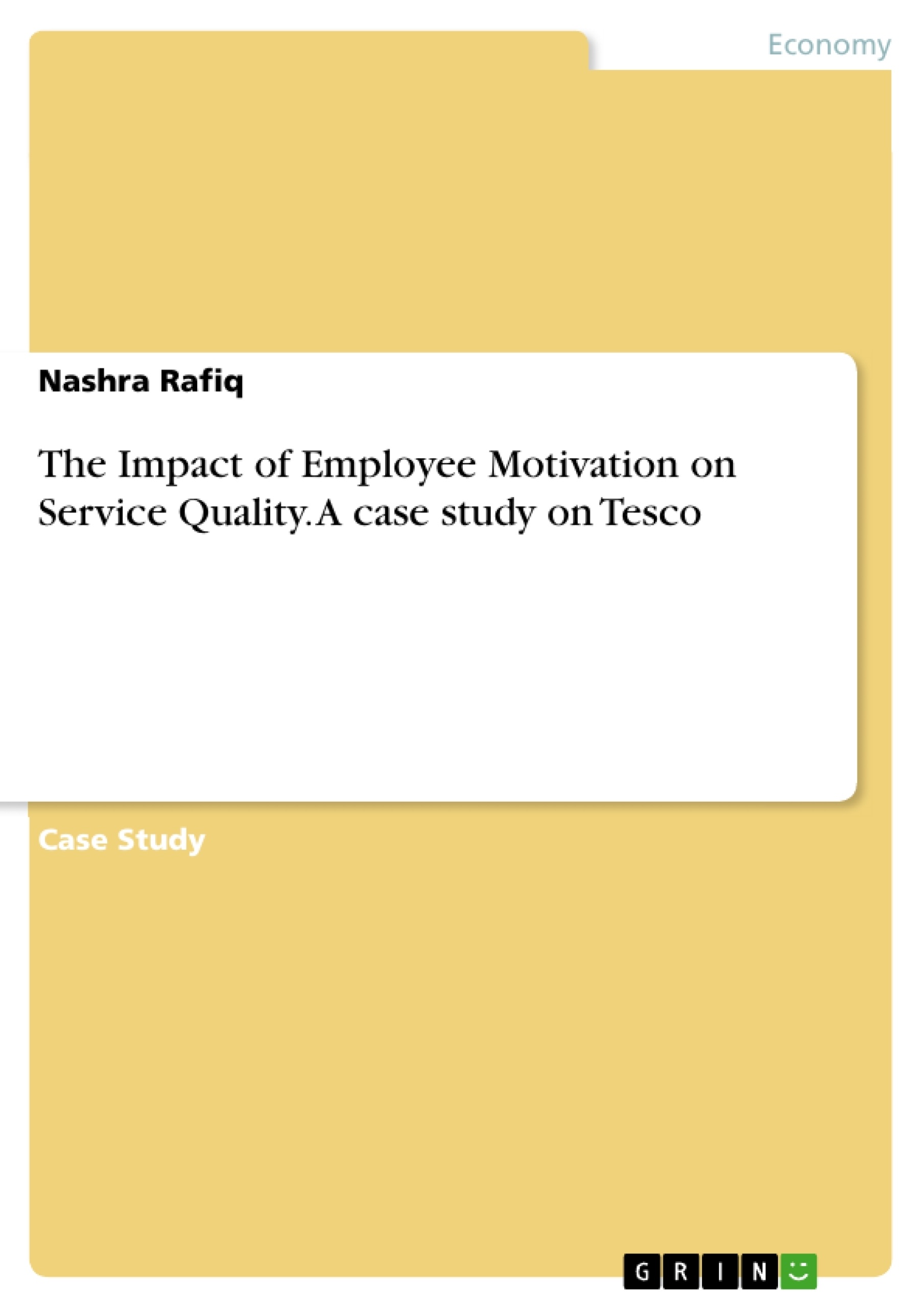The main objective of this paper is to investigate the impact of employee motivation on service quality in organisations. This study mainly focused on Britain’s leading retail organisation: Tesco. Researcher has used both primary and secondary sources of data. Data for this research was collected through questionnaire survey from staff members and potential customers of Tesco. The research data was analysed using statistical software so that the impact of employee motivation on service quality could be examined. In this study, the researcher has used two variables. Employee motivation is the independent variable, while service quality is the dependent variable. Researcher divided the questionnaire into two components, in which the first part was filled by 50 potential customers of Tesco, while the other half was filled by 50 staff members of Tesco.
The study has used frequency distribution as the statistical technique to determine the individual result of each question of the survey. The hypothesis of the study was tested by using linear regression statistical technique because the major aim of this research was to analyse the impact of employee motivation on service quality. The result of this study indicates that employee motivation positively impacts the service quality of the organisation. Similarly, employee motivation leads to customer satisfaction. This suggests that if employees are motivated, this will eventually increases the quality of services provided by the organisation and thus, it will enhances the overall performance of the firm.
Inhaltsverzeichnis (Table of Contents)
- Abstract.
- CHAPTER 1 – INTRODUCTION.
- 1.1. Background of Research.
- 1.2. Problem Identification.
- 1.3. Significance of the Study.
- 1.4. Research Aims and Objectives
- 1.5. Research Question(s) .......
- 1.6. Definitions of Terms.
- 1.6.1. Employee Motivation ......
- 1.6.2. Service Quality..\n
- 1.7. Research Outline…………………………..\n
- CHAPTER 2 – LITERATURE REVIEW
- 2.1. Employee Motivation
- 2.2. Service Quality............
- 2.3. Perceived Service Quality and Customer Satisfaction....
- 2.4. Employee Motivation and Service Quality
- 2.5. Conceptual Framework .....
- CHAPTER 3 – METHODOLOGY
- 3.1. Research Design...\n
- 3.2. Research Philosophy.
- 3.3. Research Approach.
- 3.4. Data Collection
- 3.4.1. Primary Data.
- 3.4.2. Secondary Data.
- 3.5. Sample Size...........
- 3.6. Sampling Method...\n
- 3.7. Data Analysis Method
- 3.8. Reliability and Validity....\n
- 3.9. Ethical Considerations.\n
- CHAPTER 4 – THE DATA ANALYSIS SECTION.
- 4.1. Analysing Results using Quantitative Data.
- 4.1.1 Frequency Distribution
- Section 1 Perceived Service Quality
- Section 2 - Perceived Employee Motivation.
- 4.1.2. Regression Analysis
- 4.2. Analysis of Hypothesis ........\n
- CHAPTER 5 – DISCUSSION AND CONCLUSION
- 5.1. Discussion..........\n
- 5.2. Conclusion\n...........\n
- 5.3. Recommendations..\n
- References.
- Appendices...\n
Zielsetzung und Themenschwerpunkte (Objectives and Key Themes)
This paper aims to investigate the impact of employee motivation on service quality within organizations. Specifically, it focuses on Tesco, a leading retail organization in Britain. The study utilizes both primary and secondary data sources, employing statistical techniques to analyze the relationship between employee motivation and service quality. It seeks to determine whether motivated employees lead to improved service quality and ultimately enhanced customer satisfaction.
- The impact of employee motivation on service quality
- The relationship between employee motivation and customer satisfaction
- The use of primary and secondary data sources in research
- The application of statistical techniques to analyze the relationship between variables
- The importance of employee motivation for organizational performance
Zusammenfassung der Kapitel (Chapter Summaries)
Chapter 1 introduces the research, outlining its background, identifying the research problem, and highlighting the significance of the study. It also defines key terms such as employee motivation and service quality. Chapter 2 delves into a literature review, examining existing research on employee motivation, service quality, perceived service quality and customer satisfaction, and the relationship between employee motivation and service quality. The chapter concludes with the development of a conceptual framework for the study. Chapter 3 outlines the methodology employed in the research, including the research design, philosophy, approach, data collection methods, sample size, sampling method, data analysis techniques, reliability and validity considerations, and ethical considerations.
Schlüsselwörter (Keywords)
The main keywords and focus topics of this text are: employee motivation, service quality, customer satisfaction, primary data, secondary data, statistical analysis, linear regression, hypothesis testing, organizational performance, and Tesco.
- Citation du texte
- Nashra Rafiq (Auteur), 2019, The Impact of Employee Motivation on Service Quality. A case study on Tesco, Munich, GRIN Verlag, https://www.grin.com/document/1358591



